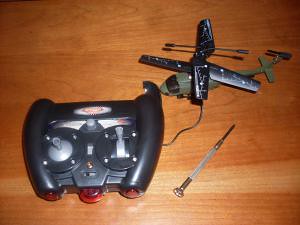 Excerpt from a toy helicopter's directions: "In if the flight does not have the impetus to change the operating lever, but the helicopter still in airborne spun, by now might adjust in your hand on remote control's vernier adjustment knob, balanced does not spin until the helicopter."
Excerpt from a toy helicopter's directions: "In if the flight does not have the impetus to change the operating lever, but the helicopter still in airborne spun, by now might adjust in your hand on remote control's vernier adjustment knob, balanced does not spin until the helicopter."My translation: "Fly the helicopter to a steady height with the Throttle stick. Then adjust the Vernier adjustment knob so that the helicopter does not spin left or right."
Note that the diagram shows the Throttle stick and the Vernier adjustment knob.
Note to companies: I charge $100 per hour for translations. That's real cheap. This entire manual could be fixed in under an hour. Then your company won't be so embarrassed, and more of your customers will be able to figure out how to use their Holiday Gifts. Lowered childhood frustration might lead to world peace.



